GET READY, GET SET, ADD! Do you wish someone could simply explain addition? You will find all the explanations you need inside this book! Learn about partial sums, regrouping, place value, and more. Whether you are learning this information for the first timeon your own or with a tutoror you want to review your math skills, this book is a great choice for you!
FREE WORKSHEETS AVAILABLE AT ENSLOW.COM
About The Author Author
Rebecca Wingard-Nelson develops and writes math assessment tests, exit exams, proficiency tests, textbooks, and workbooks. She has written many math series for Enslow Publishers, Inc.


Math is all around, and an important part of anyones life. You use math when youre playing games, cooking food, spending money, telling time, reading music, or doing any other activity that uses numbers. Even finding a television channel uses math! Addition Is Everywhere Every day you use addition, and you might not even know it.
When you have one sticker, and your friend gives you one more sticker, you know that you have two stickers. Addition is that simple. Using This Book This book can be used to learn or review addition at your own speed. It can be used on your own or with a friend, tutor, or parent. Get ready to discover math... made easy!
digitA symbol that stands for a number.
Numbers are written using the following ten symbols, called digits. 0, 1, 2, 3, 4, 5, 6, 7, 8, 9 Numbers zero through nine are written using only one digit. Larger numbers are written using two or more digits. The number 346 has three digits, each in a different place. Each place has a name that tells its value. 
 In the number 346, the digit is in the ones place.
In the number 346, the digit is in the ones place.
That means the digit has a value of 6 ones. The digit is in the tens place. It has a value of 4 tens. The digit is in the hundreds place. It has a value of 3 hundreds. 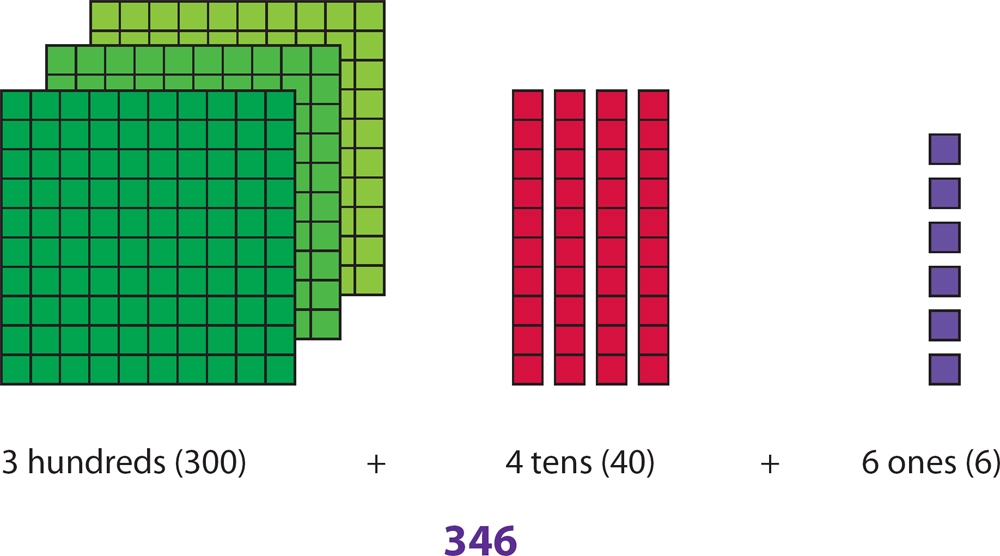
The one-digit numbers are
0, 1, 2, 3, 4, 5, 6, 7, 8, and 9. When you add two numbers together, you find how many you have in all.
If you have one soccer ball and add two soccer balls, you have three soccer balls in all.  Lets try another one. If you have four blue marbles and then get two more red marbles, you have six marbles in all.
Lets try another one. If you have four blue marbles and then get two more red marbles, you have six marbles in all.  All of these equations have one-digit answers.
All of these equations have one-digit answers.
| 0 + 0 = 0 | 2 + 2 = 4 | 4 + 3 = 7 |
| 0 + 1 = 1 | 2 + 4 = 6 | 4 + 4 = 8 |
| 0 + 3 = 3 | 2 + 5 = 7 | 5 + 0 = 5 |
| 0 + 4 = 4 | 2 + 7 = 9 | 5 + 1 = 6 |
| 0 + 7 = 7 | 3 + 1 = 4 | 5 + 3 = 8 |
| 1 + 1 = 2 | 3 + 3 = 6 | 5 + 4 = 9 |
| 1 + 3 = 4 | 3 + 4 = 7 | 6 + 0 = 6 |
| 1 + 4 = 5 | 3 + 5 = 8 | 6 + 2 = 8 |
| 1 + 6 = 7 | 3 + 6 = 9 | 7 + 2 = 9 |
| 2 + 0 = 2 | 4 + 0 = 0 | 8 + 1 = 9 |
When you learn how to add one-digit numbers, adding larger numbers is easy.

When you read an addition problem out loud, you say, 4 + 3 = 7
Four plus three equals seven. Numbers that are being added are called addends.

The answer to an addition problem is called the sum.


Add any two numbers first.


Add any two numbers first.
The answer will be the same. You can add three or more numbers. Put the numbers under each other in a column. This is called column addition. 1 + 4 + 2 Write the numbers in a column.  Now add the third number to the sum you just found.
Now add the third number to the sum you just found. 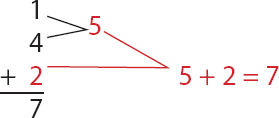 The sum of 1 + 4 + 2 is 7.
The sum of 1 + 4 + 2 is 7.  The sum of 1 + 4 + 2 is 7.
The sum of 1 + 4 + 2 is 7.
In column addition, just keep adding numbers. When there are no more numbers to add, you are done! Look at another example. 3 + 2 + 3 Write the numbers in a column. 
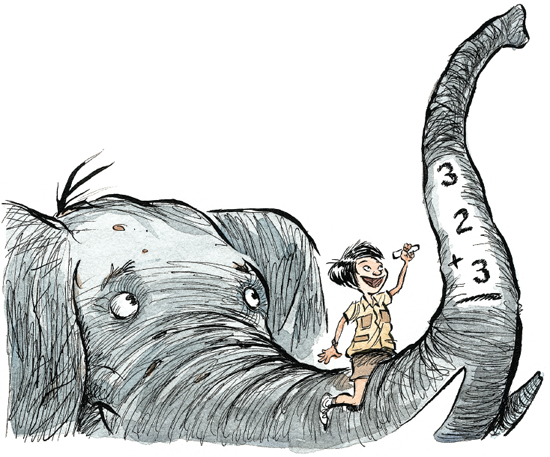
In column addition, always add from right to left. When you add numbers, sometimes the answer is more than 9.

Lets look at
6 + 6.

The sum of 12 ones can be regrouped as 1 group of ten with 2 ones left over.

The number 12 has a 1 in the tens place and a 2 in the ones place.
7 + 8 7 ones + 8 ones = 15 ones

You cant write 15 ones in the ones place.
7 + 8 7 ones + 8 ones = 15 ones

You cant write 15 ones in the ones place.
There is only room for one digit in the ones place. Regroup 15 ones as

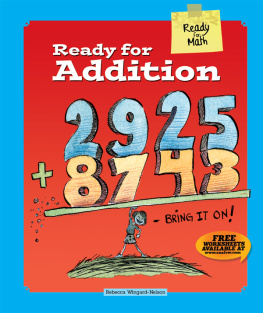
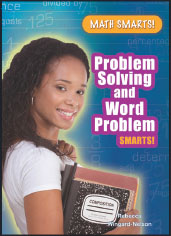

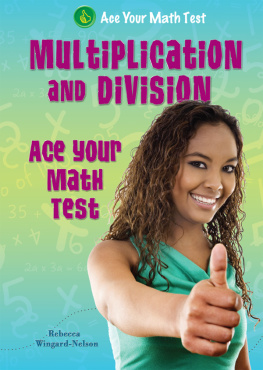

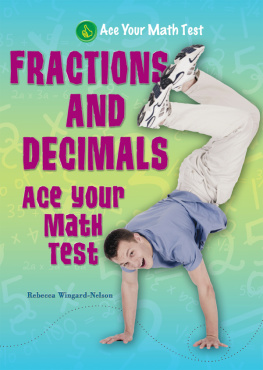
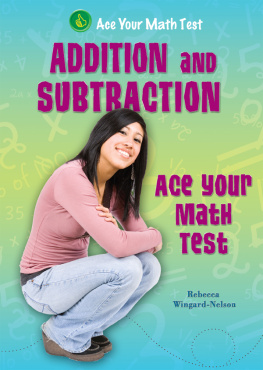
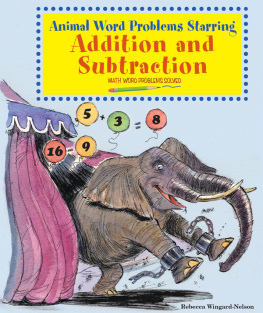
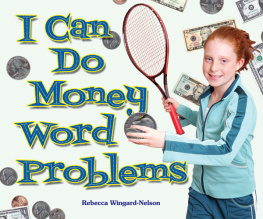

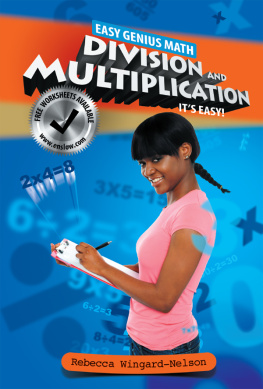
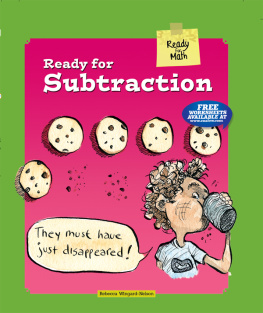

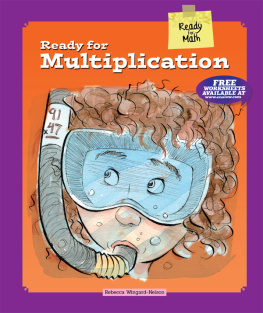
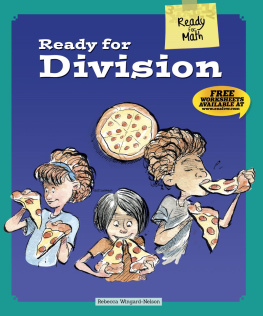
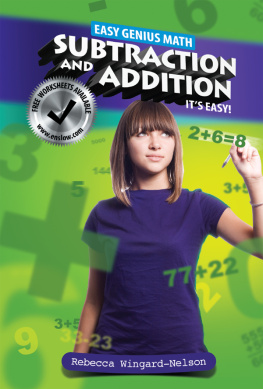



 Math is all around, and an important part of anyones life. You use math when youre playing games, cooking food, spending money, telling time, reading music, or doing any other activity that uses numbers. Even finding a television channel uses math! Addition Is Everywhere Every day you use addition, and you might not even know it.
Math is all around, and an important part of anyones life. You use math when youre playing games, cooking food, spending money, telling time, reading music, or doing any other activity that uses numbers. Even finding a television channel uses math! Addition Is Everywhere Every day you use addition, and you might not even know it. 
 In the number 346, the digit is in the ones place.
In the number 346, the digit is in the ones place.
 Lets try another one. If you have four blue marbles and then get two more red marbles, you have six marbles in all.
Lets try another one. If you have four blue marbles and then get two more red marbles, you have six marbles in all.  All of these equations have one-digit answers.
All of these equations have one-digit answers. When you read an addition problem out loud, you say, 4 + 3 = 7 Four plus three equals seven. Numbers that are being added are called addends.
When you read an addition problem out loud, you say, 4 + 3 = 7 Four plus three equals seven. Numbers that are being added are called addends.  The answer to an addition problem is called the sum.
The answer to an addition problem is called the sum. 
 Add any two numbers first.
Add any two numbers first.  Now add the third number to the sum you just found.
Now add the third number to the sum you just found.  The sum of 1 + 4 + 2 is 7.
The sum of 1 + 4 + 2 is 7. 

 Lets look at 6 + 6.
Lets look at 6 + 6.  The sum of 12 ones can be regrouped as 1 group of ten with 2 ones left over.
The sum of 12 ones can be regrouped as 1 group of ten with 2 ones left over.  The number 12 has a 1 in the tens place and a 2 in the ones place. 7 + 8 7 ones + 8 ones = 15 ones
The number 12 has a 1 in the tens place and a 2 in the ones place. 7 + 8 7 ones + 8 ones = 15 ones  You cant write 15 ones in the ones place. 7 + 8 7 ones + 8 ones = 15 ones
You cant write 15 ones in the ones place. 7 + 8 7 ones + 8 ones = 15 ones